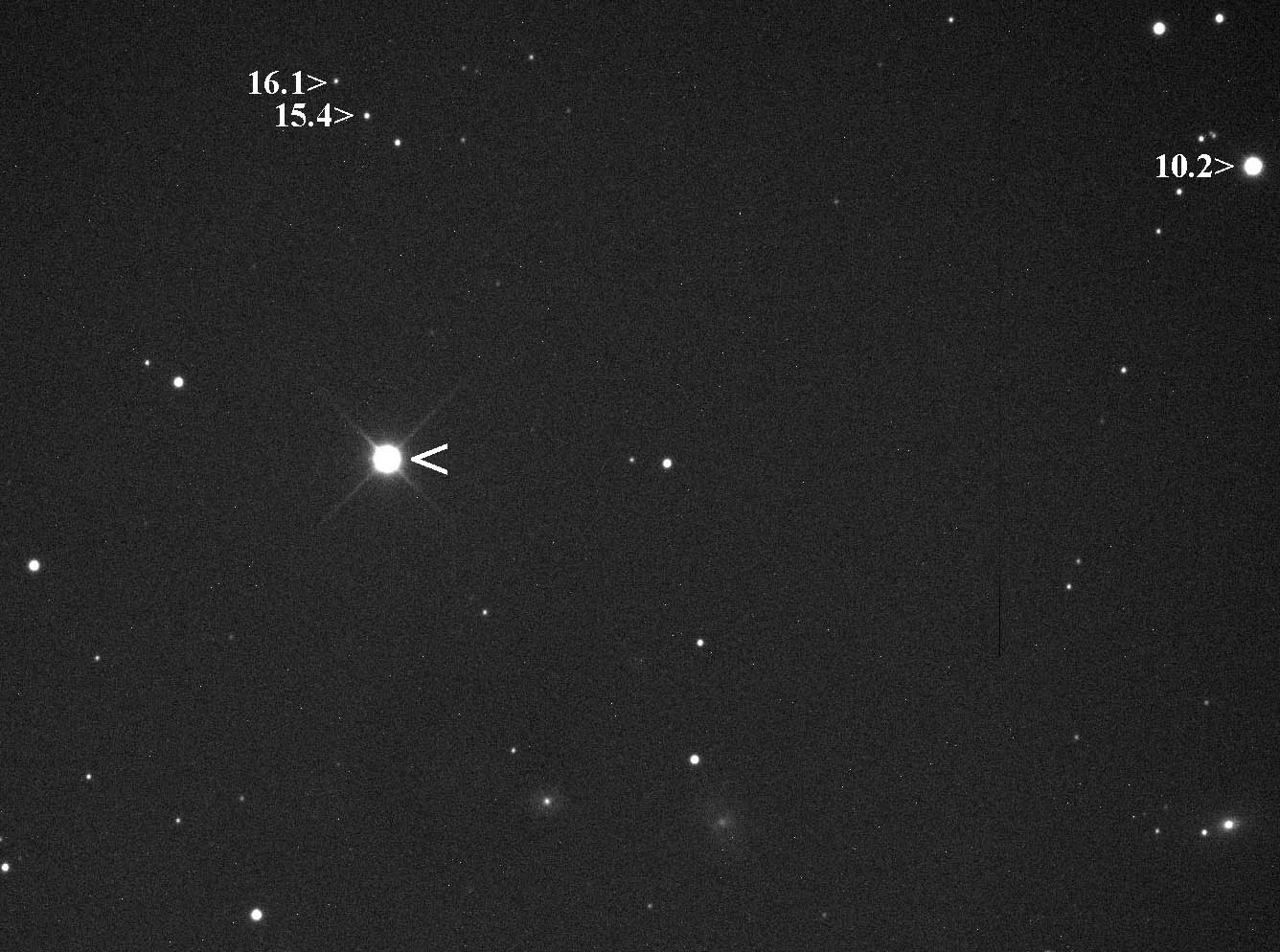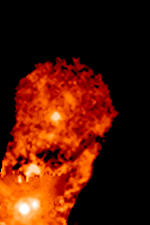|
V529 Orionis
V529 Orionis, also known as Nova Orionis 1678, is a variable star which is usually classified as a nova. It was discovered on 28 March 1678 by Johannes Hevelius, who spotted it while observing a lunar occultation of χ1 Orionis, the star that forms the northernmost tip of Orion's club. Following the occultation of χ1 Orionis, Hevelius observed the occultation of another star by the Moon a few minutes later, which disappeared behind the first quarter Moon at 09:16 and reappeared at 10:29. Those details, combined with modern coordinates for χ1 Orionis, allowed Ashworth to derive coordinates, probably accurate to within a few arc seconds, for the 1678 nova. V529 Orionis is sometimes referred to as Nova Orionis ''1667'' (for example the Simbad database makes this identification), but Ashworth argues against this identification and the identification of the star during an occultation makes the year unambiguous. The maximum and minimum apparent magnitudes for this star ... [...More Info...] [...Related Items...] OR: [Wikipedia] [Google] [Baidu] |
Orion (constellation)
Orion is a prominent constellation located on the celestial equator and visible throughout the world. It is one of the most conspicuous and recognizable constellations in the night sky. It is named after Orion, a hunter in Greek mythology. Its brightest stars are the blue-white Rigel (Beta Orionis) and the red Betelgeuse (Alpha Orionis). Characteristics Orion is bordered by Taurus to the northwest, Eridanus to the southwest, Lepus to the south, Monoceros to the east, and Gemini to the northeast. Covering 594 square degrees, Orion ranks twenty-sixth of the 88 constellations in size. The constellation boundaries, as set by Belgian astronomer Eugène Delporte in 1930, are defined by a polygon of 26 sides. In the equatorial coordinate system, the right ascension coordinates of these borders lie between and , while the declination coordinates are between and . The constellation's three-letter abbreviation, as adopted by the International Astronomical Union in 1922, is "Ori ... [...More Info...] [...Related Items...] OR: [Wikipedia] [Google] [Baidu] |
Nova
A nova (plural novae or novas) is a transient astronomical event that causes the sudden appearance of a bright, apparently "new" star (hence the name "nova", which is Latin for "new") that slowly fades over weeks or months. Causes of the dramatic appearance of a nova vary, depending on the circumstances of the two progenitor stars. All observed novae involve white dwarfs in close binary systems. The main sub-classes of novae are classical novae, recurrent novae (RNe), and dwarf novae. They are all considered to be cataclysmic variable stars. Classical nova eruptions are the most common type. They are likely created in a close binary star system consisting of a white dwarf and either a main sequence, subgiant, or red giant star. When the orbital period falls in the range of several days to one day, the white dwarf is close enough to its companion star to start drawing accreted matter onto the surface of the white dwarf, which creates a dense but shallow atmosphere. This atmo ... [...More Info...] [...Related Items...] OR: [Wikipedia] [Google] [Baidu] |
Johannes Hevelius
Johannes Hevelius Some sources refer to Hevelius as Polish: * * * * * * * Some sources refer to Hevelius as German: * * * * *of the Royal Society * (in German also known as ''Hevel''; pl, Jan Heweliusz; – 28 January 1687) was a councillor and mayor of Gdańsk (Danzig), in the Polish–Lithuanian Commonwealth. As an astronomer, he gained a reputation as "the founder of lunar topography", and described ten new constellations, seven of which are still used by astronomers. Etymology According to the Polish Academy of Sciences (1975) the origin of the name goes back to the surname Hawke, a historical alternative spelling for the English word hawk, which changed into ''Hawelke'' or ''Hawelecke''. In Poland he is known as ''Jan Heweliusz''. Other versions of the name include Hewel, Hevel, Hevelke or Hoefel, Höwelcke, Höfelcke. According to Feliks Bentkowski (1814), during his early years he also signed as Hoefelius. Along with the Latinized version of his name, Ludwig G ... [...More Info...] [...Related Items...] OR: [Wikipedia] [Google] [Baidu] |
Occultation
An occultation is an event that occurs when one object is hidden from the observer by another object that passes between them. The term is often used in astronomy, but can also refer to any situation in which an object in the foreground blocks from view (occults) an object in the background. In this general sense, occultation applies to the visual scene observed from low-flying aircraft (or computer-generated imagery) when foreground objects obscure distant objects dynamically, as the scene changes over time. If the closer body does not entirely conceal the farther one, the event is called a ''transit''. Both transit and occultation may be referred to generally as ''occlusion''; and if a shadow is cast onto the observer, it is called an eclipse. The symbol for an occultation, and especially a solar eclipse, is file:Occultation symbol.svg (U+1F775 🝵). Occultations by the Moon The term occultation is most frequently used to describe lunar occultations, those relatively ... [...More Info...] [...Related Items...] OR: [Wikipedia] [Google] [Baidu] |
Chi1 Orionis
Chi1 Orionis (χ1 Ori, χ1 Orionis) is a star about 28 light years away. It is in the constellation Orion, where it can be seen in the tip of the hunter's upraised club. χ1 Ori is a G0V star. It is listed in the General Catalog of Variable Stars as an RS Canum Venaticorum variable, varying between visual magnitude 4.38 and 4.41. Stępień and Geyer measured its period to be 5.5 days. χ1 Ori has a faint companion with a mass estimated at about 15 % of the mass of the Sun, and an orbital period of 14.1 years. The companion orbits an average distance of 6.1 AU from the primary, but has a fairly high orbital eccentricity, ranging from 3.3 AU out to 8.9 AU from the primary. Because of this red dwarf companion, the likelihood of habitable planets in this system is low. It is thought that the companion is a red dwarf still contracting towards the main sequence. A necessary condition for the existence of a planet in this system are stable zones where the object can ... [...More Info...] [...Related Items...] OR: [Wikipedia] [Google] [Baidu] |
Apparent Magnitude
Apparent magnitude () is a measure of the brightness of a star or other astronomical object observed from Earth. An object's apparent magnitude depends on its intrinsic luminosity, its distance from Earth, and any extinction of the object's light caused by interstellar dust along the line of sight to the observer. The word ''magnitude'' in astronomy, unless stated otherwise, usually refers to a celestial object's apparent magnitude. The magnitude scale dates back to the ancient Roman astronomer Claudius Ptolemy, whose star catalog listed stars from 1st magnitude (brightest) to 6th magnitude (dimmest). The modern scale was mathematically defined in a way to closely match this historical system. The scale is reverse logarithmic: the brighter an object is, the lower its magnitude number. A difference of 1.0 in magnitude corresponds to a brightness ratio of \sqrt /math>, or about 2.512. For example, a star of magnitude 2.0 is 2.512 times as bright as a star of magnitude 3.0 ... [...More Info...] [...Related Items...] OR: [Wikipedia] [Google] [Baidu] |
T Tauri Star
T Tauri stars (TTS) are a class of variable stars that are less than about ten million years old. This class is named after the prototype, T Tauri, a young star in the Taurus star-forming region. They are found near molecular clouds and identified by their optical variability and strong chromospheric lines. T Tauri stars are pre-main-sequence stars in the process of contracting to the main sequence along the Hayashi track, a luminosity–temperature relationship obeyed by infant stars of less than 3 solar masses () in the pre-main-sequence phase of stellar evolution. It ends when a star of or larger develops a radiative zone, or when a smaller star commences nuclear fusion on the main sequence. History While T Tauri itself was discovered in 1852, the T Tauri class of stars were initially defined by Alfred Harrison Joy in 1945. Characteristics T Tauri stars comprise the youngest visible F, G, K and M spectral type stars (). Their surface temperatures are similar to th ... [...More Info...] [...Related Items...] OR: [Wikipedia] [Google] [Baidu] |
Novae
A nova (plural novae or novas) is a transient astronomical event that causes the sudden appearance of a bright, apparently "new" star (hence the name "nova", which is Latin for "new") that slowly fades over weeks or months. Causes of the dramatic appearance of a nova vary, depending on the circumstances of the two progenitor stars. All observed novae involve white dwarfs in close binary systems. The main sub-classes of novae are classical novae, recurrent novae (RNe), and dwarf novae. They are all considered to be cataclysmic variable stars. Classical nova eruptions are the most common type. They are likely created in a close binary star system consisting of a white dwarf and either a main sequence, subgiant, or red giant star. When the orbital period falls in the range of several days to one day, the white dwarf is close enough to its companion star to start drawing accreted matter onto the surface of the white dwarf, which creates a dense but shallow atmosphere. This atmosp ... [...More Info...] [...Related Items...] OR: [Wikipedia] [Google] [Baidu] |






